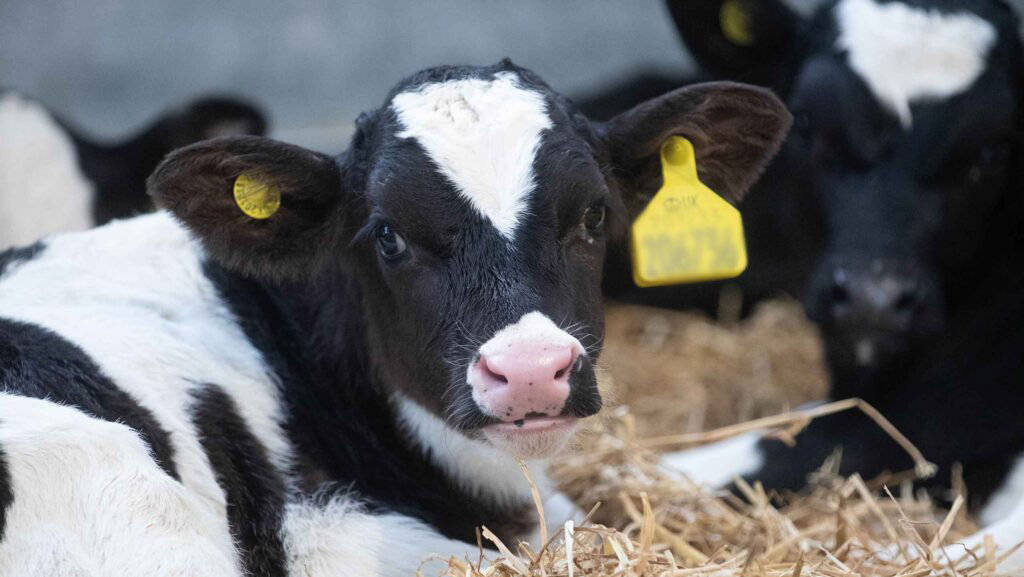Why Vaccination Alone Isn’t Enough to Prevent Calf Pneumonia

Preventing calf pneumonia hinges on maintaining optimal standards of housing, nutrition, and overall care. Lara Robinson-Fletcher from Daleside Veterinary Group shares her valuable insights.
See also: How to Streamline Routine Dairy Tasks with a Calf Kitchen

Lara Robinson-Fletcher © Daleside Veterinary Group
Pneumonia is a frequent and costly ailment affecting both beef and dairy calves and poses serious risks to their well-being. An outbreak can be discouraging and lead to substantial financial losses.
Calves are especially prone to pneumonia because they have relatively limited lung capacity and narrow airways compared to other animals.
A variety of pathogens can cause pneumonia, including some that are viral and therefore not treatable with antibiotics. These include infectious bovine rhinotracheitis, bovine respiratory syncytial virus, and bovine parainfluenza-3.
Additionally, bacterial infections like mycoplasma bovis, histophilus somni, and pasteurella multocida also play a role.
However, pneumonia is a complex condition influenced by multiple factors—it’s not solely a result of pathogen presence. The health status of the calf and its surrounding environment significantly contribute to the likelihood of pneumonia development, indicating the need for a holistic approach in prevention efforts.
Optimizing the Calf Environment
When considering the calf’s living area, pay attention to the following aspects:
Temperature: Is the calf housing too warm or too cold? The thermoneutral zone for calves from birth to four weeks is between 10°C and 25°C. For older calves, it ranges from 0°C to 23°C. For calves under four weeks, if temperatures fall below 10°C—as seen for six months in 2023—additional measures like thicker bedding, increased milk feeding, or heat lamps are necessary. Monitoring internal temperatures in calf housing is crucial.
Dampness: Is there excessive moisture in the calf housing? Damp conditions can result from poor ventilation, insufficient drainage, or from preparing milk and cleaning buckets in the same area. Calf pen flooring should have at least a 5% slope to facilitate drainage, and facilities for milk preparation should be near but not within calf housing to avoid moisture accumulation.
Ventilation: Ventilation can often be inadequate. When addressing ventilation, ensure it does not lead to harmful draughts. Draughts can significantly affect a calf’s lower critical temperature, requiring adjustments to their environment. For instance, if a newborn calf is in a draughty area where airspeed reaches 2 m/sec, its critical temperature rises to 17°C compared to 10°C in a draught-free setting. Airspeed at calf level should ideally be around 0.25 m/sec.
Common errors in ventilation include:
- Having two or more sides of the housing without air inlets.
- Creating turbulent airflow due to uneven inlet areas.
- Allowing large inlet areas that increase airspeed at calf level.
- Utilizing oversized sheds that leave too much airspace.
- Lack of an outlet in the roof.
- Housing animals of greatly varying ages together.
It is advisable not to house calves of different ages within a two-week difference and definitely not to mix younger calves with older ones that have been elsewhere, as older animals can transmit pathogens.
Calf Health and Management
The health of the calf itself plays a critical role in pneumonia susceptibility. Consider the following factors:
Colostrum: Calves should receive 10% of their body weight in high-quality colostrum—showing over 22% on a Brix refractometer—within the first six hours after birth, ideally within two hours, with a follow-up feeding within 12 hours.
Source: Purchasing calves can hazard pneumonia risks. These animals may be stressed from relocation and their health status on their previous farm may be uncertain. It is preferable to breed replacement stock on-site or acquire from a single, known source with reputable colostrum management and low disease incidence.
Stress: Excessive stress from multiple procedures conducted too closely can weaken the immune system and increase pneumonia risk among calves.
Disease: Are you testing for bovine viral diarrhoea on your farm? This disease suppresses immunity, elevating the risk of pneumonia.
Nutrition: Many calves in the UK raised on milk powder are underfed. For instance, a calf receiving only 2 litres of milk twice daily is likely not getting enough nutrition, which could lead to energy depletion for warmth and increased susceptibility to pneumonia. Aim for 900g of high-quality milk replace powder daily and consult your farm vet for nutritional strategies.
Response to Outbreaks
In the event of a pneumonia outbreak, engage your veterinarian immediately. Blanket treatment with antibiotics may not be suitable for every pneumonia case.
Your vet can evaluate the pneumonia risk factors present on your farm and recommend improvements. They can also conduct diagnostics to identify the pathogens responsible, through techniques such as bronchoalveolar lavage, which collects lung fluid for testing to pinpoint the culprits.

© Tim Scrivener
This assessment allows for tailored treatment options and informs the suitability of vaccinations. However, vaccinations alone are not a panacea; the foundational aspects of nutrition, environment, and overall calf health must be optimized for the vaccines to be effective.
It’s important to note that vaccines typically target a limited range of pathogens and specific calf ages. Hence, customizing a vaccination strategy for your unique farm situation is critical rather than relying on any one solution as a universal remedy against pneumonia.
Understanding Long-term Implications
The essential takeaway is that calves that contract pneumonia may suffer lingering effects throughout their lives. Prioritizing a comprehensive pneumonia prevention plan is vital for safeguarding the future health and productivity of the herd.
Ultimately, healthy and profitable adult cattle result from exceptional management practices applied to young stock.

Maria Sanchez completed her Bachelor’s degree in Plant Sciences from the University of California, Davis, in the USA. Her studies focused on plant genetics and biotechnology, with an emphasis on developing disease-resistant crop varieties. Maria has contributed to several research projects aimed at improving crop resilience to climate change and is now pursuing her Master’s degree in Plant Breeding.
